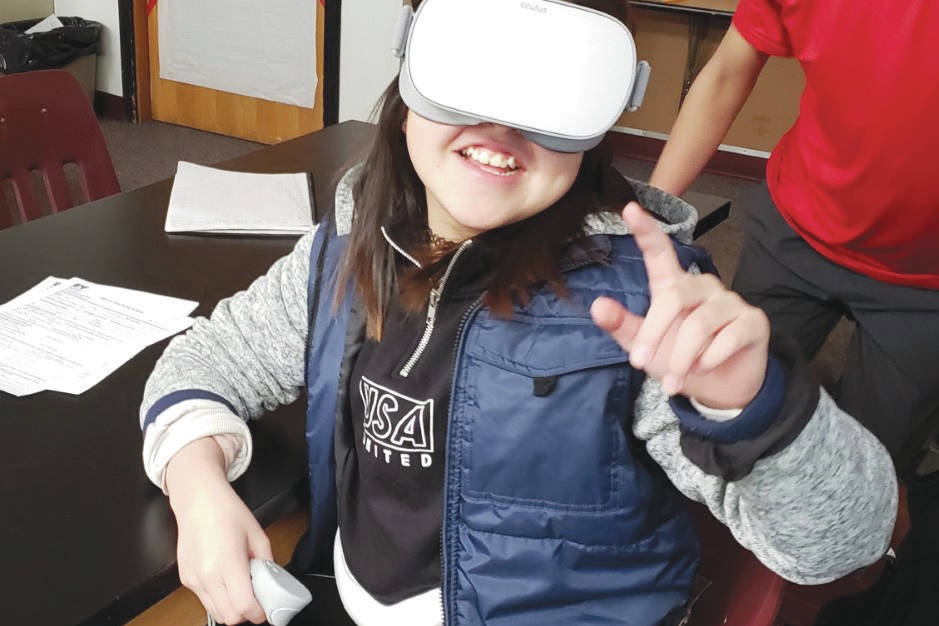As the education specialist for the Alaska Maritime National Wildlife Refuge, it is my job to bring the wonders of the refuge’s wildlife and awe-inspiring natural places into the classrooms of grade school students. Like other professionals within my field, my goal is to help students become aware of and see value in the habitats and wildlife protected by the refuge.
I do, however, have a few challenges my counterparts at other refuges do not necessarily have to deal with. Due to the sheer size and geographical expansiveness of Alaska Maritime National Wildlife Refuge, it can sometimes be very difficult for me to create a sense of connection with my audiences and the wild places I’m sharing with them.
Often, the classrooms I visit and the students I teach are hundreds, sometimes even thousands, of miles away from the wildlife and wild places I’m teaching about.
For those who are unfamiliar with Alaska Maritime National Wildlife Refuge, it is vast, covering 3.4 million acres and stretching from one corner of Alaska to the other. It encompasses an estimated 2,500 islands and headlands and has thousands of miles of coastlines within its borders.
It could easily be argued that it has some of the most remote wilderness areas of any refuge within the United States.
The refuge is also home to thousands of seabirds and marine mammals. Its breathtaking islands and ocean vistas and staggering numbers of wildlife that depend on its protected habitats are some of the most awesome visuals a person can witness.
However, due to its extreme remoteness, it is also one of the most difficult refuges to access. This remoteness creates an immense hurdle that I, as the refuge educator trying to share those wild places with my students, must help them leap.
Even the refuge’s headquarters building is located in Homer, which is separated from the refuge’s protected lands, habitats and wildlife. The majority of the classrooms I visit are far removed from the refuge itself. This distance can sometimes make it challenging for me to help my students relate to the topics of my lessons.
In the past, I’ve used numerous techniques to try and bring the refuge to those students who would otherwise not be able to experience it. Photos, films, newspaper articles, artwork, imagination and social media posts have all been somewhat successful tools I’ve used for sharing the beauty and wildlife found within the remote wilderness areas of Alaska Maritime National Wildlife Refuge.
However, all of these previous techniques have been inadequate, leaving the students with an overall disconnect with the wild places they are viewing. They still feel a sense of separation between themselves and those remote areas that they will never likely visit in real life.
I have asked myself repeatedly, “How do I help my students immerse themselves into the refuge without them actually visiting the refuge itself?”
The answer to this dilemma has come in the form of an emerging new technology known as virtual reality. Through virtual reality, videos recorded using special 360-degree cameras can be viewed through headsets that are specially designed to help the viewers feel like they are inside the video.
The staff of the Alaska Maritime National Wildlife Refuge has started the process of recording videos of the remote areas within the refuge that I am then able to share with my young audiences.
Many of the students I work with are very familiar with using virtual reality headsets and the 3D audio and visual environments they provide because this technology has become a hugely popular format for video gaming. This familiarity has allowed me to help them make connections between something they already enjoy doing (playing video games) and the natural world.
At the St. Paul Island School in St. Paul, Alaska, sixth- through 12th-graders got the opportunity to use the headsets to view and explore remote habitats within the refuge while comfortably sitting at their desks inside their classroom. Their immersive experiences were accompanied by laughs, smiles and excited exclamations of awe.
They were eager to try the headsets and travel through all the different 360-degree videos stored on them. As they explored, I also found myself answering their questions about what they were seeing. What birds are those? How many birds do you think are on those cliffs? How high are the cliffs? Do the biologists ever worry about falling off?
These questions proved the success of using the virtual reality headsets to connect the students with the refuge. Many of the questions asked would have never even crossed the students’ minds without the audio and visual immersion of their virtual visit to the refuge island. Using the headsets, they were able to experience and connect with the refuge in a whole new way.
After the success of using the virtual reality headsets with the students of St. Paul, I’m looking forward to continuing to use this new technology to connect my students and other audiences with the amazing wildlife and wild places of the refuge.
Kendra Bush is the Education Specialist at Alaska Maritime National Wildlife Refuge. Find more Refuge Notebook articles (1999–present) at https://www.fws.gov/refuge/Kenai/community/refuge_notebook.html.
By KENDRA BRUSH
Alaska Maritime National Wildlife Refuge

